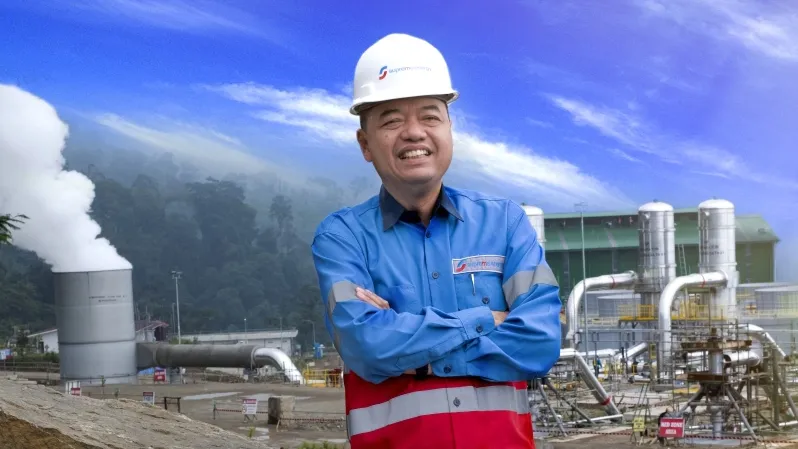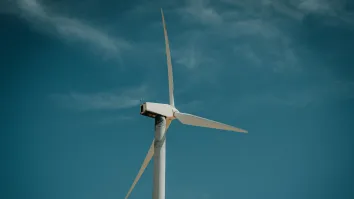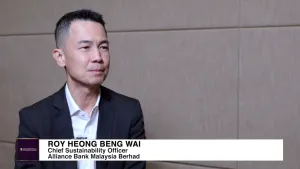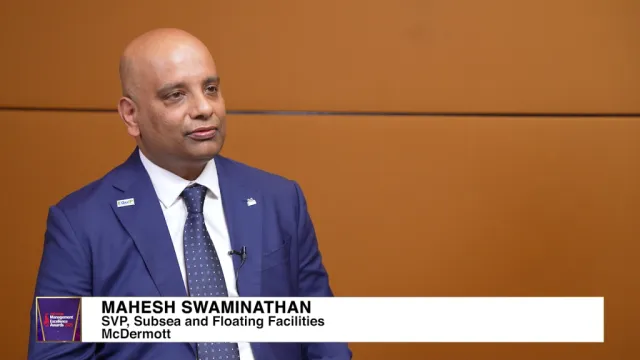
Supreme Energy takes a bold initiative to further develop geothermal in Indonesia
It carries out three projects on Sumatra Island, where 91% of its geothermal potential is unexplored.
Next to the US, Indonesia is the second country with the largest geothermal energy source in the world. Indonesia has a potential of 23,766 megawatts (MW) with an installed Geothermal Power Plant capacity of 2,286 MW, the Handbook of Energy and Economic Statistics in 2021 from the Ministry of Energy and Mineral Resources shows. Of the national potential, the island of Sumatra holds the largest potential, amounting to 9,517 MW. However, the capacity of the geothermal power plant installed in Sumatra in 2021 is only 844,8 MW or 8,8% of its total potential. This means that there is still around 91% of the potential that has not been explored.
PT Supreme Energy wants to further develop the geothermal sector in Sumatra. "We see that Java has been explored whilst Sumatra has not been developed much even though the resources are huge. In addition to the huge potential, the demand for electricity in Sumatra is also starting to grow,” said Supreme Energy's President and CEO, Nisriyanto in an exclusive interview with Asian Power.
Three projects in Sumatra
Supreme Energy has three geothermal working areas in Sumatra, namely Muara Laboh in South Solok Regency, West Sumatra, then Rantau Dedap in Muara Enim Regency, South Sumatra, and Rajabasa in Mount Rajabasa, South Lampung.
The Supreme Energy project in Sumatra contributes to supplying electricity to the high-voltage power line (SUTT), dubbed Tol Listrik Sumatra Project, by state-owned electricity company PLN, with a capacity of 275 kilovolts that stretches from the southern side of Sumatra to the northern part.
Supreme Energy's geothermal power plant in Muara Laboh mainly supplies electricity in the central part of West Sumatra such as Riau, Pekanbaru and Jambi, which so far have only relied on the 275-kilovolt network. “We see that the location of our power plant is very strategic in helping to maintain network reliability, especially in central Sumatra. With our electricity supply, we can contribute to meeting the electricity needs in central Sumatra," said Nisriyanto.
The operation of the Muara Laboh geothermal power plant at the end of 2019 in West Sumatra marked the first time a geothermal power plant has operated in the province. According to the energy ministry in 2018, the power plants in West Sumatra, 50% comes from coal-fired plants, and 30% from hydropower plants.
The operation of Supreme Energy’s geothermal power plant also supports PLN's new renewable energy mix target which is targeted to reach 23% in 2025 and in 2021 so far reach 11,5%.
These three projects in Sumatra have signed a power purchase agreement (PPA) with PLN since 2012. The Muara Laboh project has been operating since at end of 2019, the Rantau Dedap project only started operating at the end of 2021, whilst the Rajabasa project has obtained a permit from the government to start exploration in the working area but currently still negotiating with PT PLN on the PPA Extension.
"Currently, we are focusing on the implementation of these three projects, whose geothermal licenses and long-term power purchase agreements are already secured with PLN and we need to execute and develop them," said Nisriyanto.
Each of the projects has a capacity of 220 MW. For now, Supreme Energy has operated the Muara Laboh Unit-1 Geothermal Power Plant of around 86 MW and is in the stage of developing another 80 MW Muara Laboh Geothermal Unit-2. Meanwhile, the Rantau Dedap Geothermal Power Plant has been operating with a capacity of around 91 MW. These two geothermal power plants are capable of supplying electricity to around hundreds of thousands of households.
To increase output, Supreme Energy uses dual-flash technology innovation when operating geothermal power plants in Muara Laboh and Rantau Dedap. Nisriyanto said the use of dual-flash is considered new in Indonesia and serves to maximise output by optimizing low-pressure steam supply.
“By using dual-flash, with the steam that drives the turbine, the energy will not be exhausted even at low pressure. So that under single pressure, the maximum has been 65-70 MW, but with dual flash, it can produce 80 MW," he explained.
High risk of failure
Nisriyanto explained that the current operation of geothermal power plants of 86 MW and 91 MW by Supreme Energy from a capacity of 220 MW is due to the high risk when exploring geothermal.
“Currently there is no technology that is able to detect the resources inside the earth before drilling. It is possible that the proven geothermal reserve is not as we expected. For example, of the six wells we drilled, only one well was successful. We have a very high risk related to the chance of success to develop geothermal,” he said.
With the existing risks, where they do not only generate and operate a power plant to generate electricity but also have to find and prove a source of energy, geothermal developers are looking for reasonable returns that can be compensated with the existing risks.
Nisriyanto stressed the importance of government support in facing the challenges of geothermal development.
“Unlike oil and gas which can be exported to various parties, geothermal only produces electricity where PLN is the single buyer. As a single buyer, PLN is highly regulated by the government. Because the sale of electricity is determined by the government, as well as in determining subsidies," he said.
He hopes the government can provide the right policies in determining prices and subsidies by looking at the long term. “When compared to coal-fired power plants, the cost of developing geothermal power plants is indeed more expensive. For comparison, geothermal for 1 MW costs around US$4-5m, whilst 2 MW coal power costs US$2m because geothermal developers do not only build power plants but have to find the source of fuel first. However, it is possible that market conditions may change. As currently, the price of coal has shot up to US$400 metric ton from the previous US$60-80 per metric ton, so the policies made should also be seen in the long term,” he said.
Therefore, to anticipate major risks in geothermal development, Supreme Energy focuses on working on projects that already have a PPA with PLN. "We are more focused on working on existing assets and increasing production in the three projects," concluded Nisriyanto.

















 Advertise
Advertise









